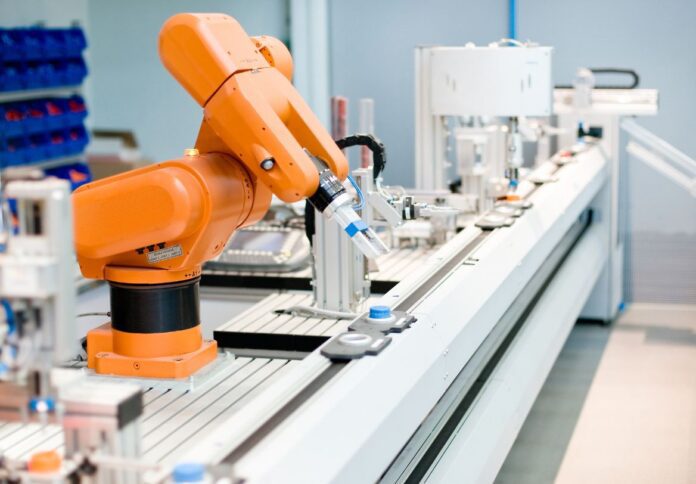
The Australian manufacturing industry has seen dynamic trends in 2022 as it still recovers from the consequences of the COVID-19 pandemic. It is no secret that the industry is still dealing with the remnants of the disruptive global event as it weathers through challenging issues such as skills gaps, supply chain bottlenecks, and workforce shortages.
With these challenges showing no signs of slowing down, let’s look into the trends that defined 2022 and explore potential ways companies may better prepare for the new year.
Trend #1: Automation
For many decades, manufacturers have been working to create the right operational model that would dramatically boost production, improve product quality, and reduce hiccups in operation.
Today, manufacturing leaders in Australia are increasingly turning to the use of emerging automation technologies to optimise human resources and address labour shortages and supply chain issues.
From manually connected processing machines, manufacturers are now making use of shop floor-connected machines powered by CAD systems, integrating industrial and mechanical design, simulation, machining, and collaboration in a simple platform.
This now allows architects and engineers to no longer be bound to their desktops, while also enabling better collaboration among project designers.
Trend #2: Carbon neutrality
The global manufacturing industry is quick to prioritise addressing climate change, with an overwhelming rollout of operations models and efforts towards achieving low-carbon or carbon-neutral manufacturing systems.
Governments around the world are also establishing landmark regulations to combat climate change, pushing businesses to go above and beyond when it comes to transitioning towards net zero operation models.
In Australia, the National Reconstruction Fund was established to open funding streams across key priority areas of the economy, with a heavy emphasis on renewables and low-emission technologies.
Trend 3: Addressing the skills gap
A great number of industry leaders and experts have made the call for measures that would solve the skills shortage in Australia.
In a recent report from RSM Australia, Chris Vein, chief executive officer of the Australian Computer Society, highlighted the need for incentives for training and upskilling programs, as well as funding for improved teacher training and education tools.
He also advocates for direct funding to get more women in the workforce, as well as additional backing for digital technologies training and non-traditional pathways into the tech workforce.
In the same report, Kate Pounder, CEO of the Technology Council of Australia, said: “Some tech jobs are highly technical and require years of university study in STEM fields, but there are many jobs that can be done by ‘digital tradespeople’. That’s why the Federal Government agreeing to fix vocational training and introduce a digital apprenticeship scheme is such a win.”
Trend 4: Additive Manufacturing
Additive manufacturing (AM) has opened a wide and ever-evolving array of opportunities for manufacturers in Australia.
The metal additive users of today, for example, have leveraged roadmaps that feature multiple real, tested parts, and now have specialised offerings tailored to the needs of different AM users.
According to market analysis provider SmarTech, powder suppliers should strive to increase efficiency and agility to keep supply flowing and accommodate customers who have the opportunity to scale additive production as they need it.
Trend #5: Optimising Supply Chains
The global supply chain will inevitably encounter many more stresses in the future, given the global shortage of materials and high energy costs.
To achieve a responsible and sustainable supply chain for the future, business leaders must grab the opportunity to step up their supplier evaluation, ensure product compliance, and enhance the monitoring of failure analysis and reports. Project predictability can be achieved by taking a step back to look at the bigger picture and tap into the integration of design and manufacturing processes.
Establishing effective communication strategies can also help mitigate the effects of supply chain disruptions. This includes ensuring that everyone is on the same page and is working towards the same goal, ensuring production materials are planned efficiently.
In a webinar hosted by Australian Manufacturing this year, Chris Gill, technical specialist for Fusion 360 at Autodesk, highlighted the significance of working on a cloud-based platform that ensures that everyone is on the same page— a single source of truth, he calls it. In design and manufacturing, this approach would eliminate disjointed markups and allow designers and engineers to tap into connected bi-directional markups.
If there is one thing that the Australian manufacturing industry can always plan for is that change will always be present every step of the way, while this list aims to provide a short overview of some of the trends that we noticed in 2022, it falls well short of capturing the full scope of trends experienced in the year and how individual circumstances have and will be affected. Manufacturers and businesses may better benefit from reflecting on the year passed, tapping into lessons learned within their own businesses to help navigate the year ahead. And, as always, please feel free to share any trends or news from your manufacturing business with the team at Australian Manufacturing.




















